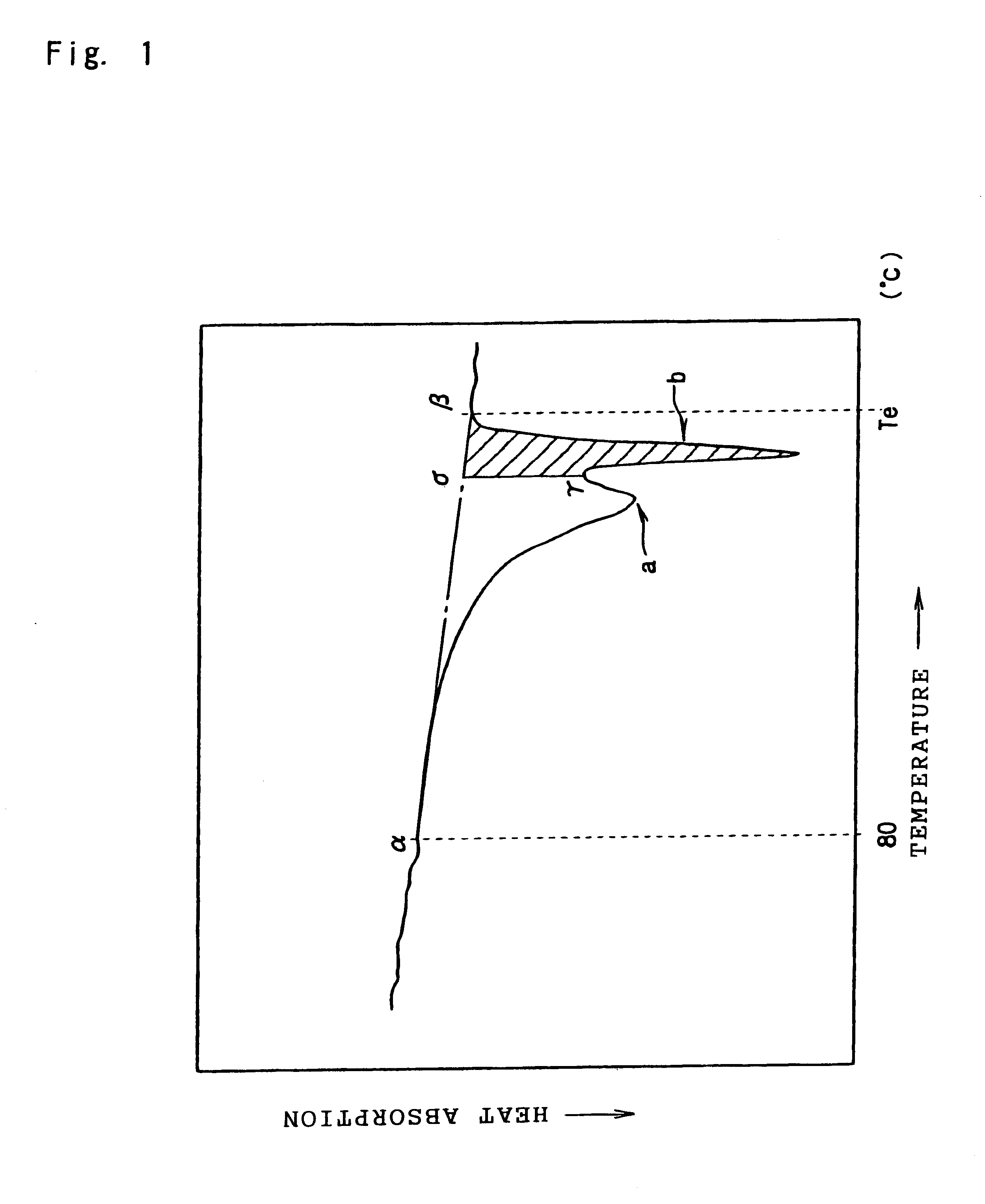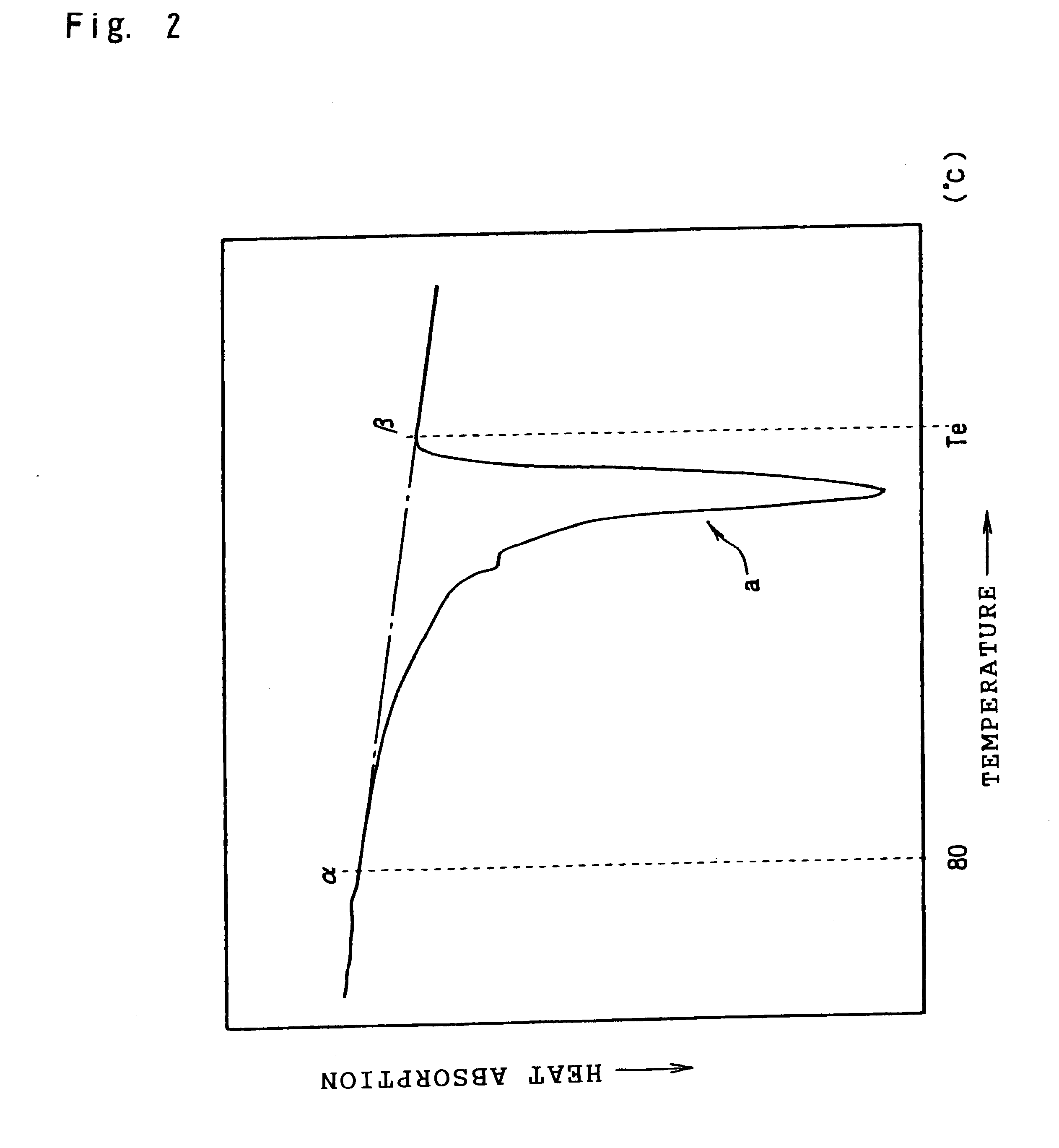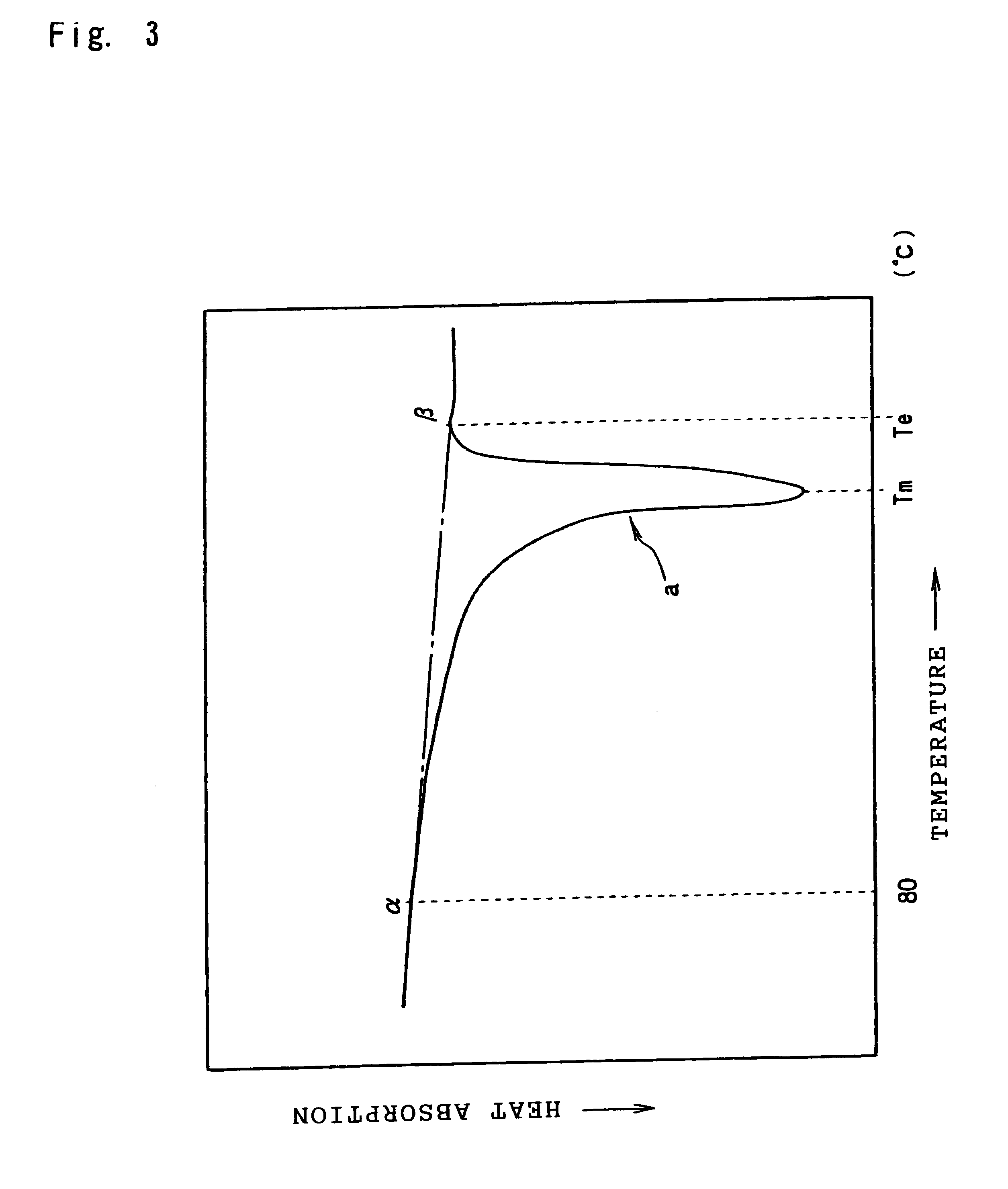Expanded polypropylene resin beads and a molded article
a polypropylene resin and molded article technology, applied in the field of expanded polypropylene resin beads and molded articles, can solve the problems of reducing the melting point, reducing the heat resistance of the molded article obtained from the resultant expanded beads, and poor impact resistance of the polypropylene resin, so as to improve the effect of improving the heat resistance of the molded article and poor absolute heat resistan
- Summary
- Abstract
- Description
- Claims
- Application Information
AI Technical Summary
Benefits of technology
Problems solved by technology
Method used
Image
Examples
example 2
In Example 2 and Comparative Example 1, the same types of metallocene PP copolymers are used as a base resin, respectively. In Example 2, there is used a metallocene PP copolymer which has substantially the same melting point as that of Comparative Example 1, but its MFR is smaller, thereby obtaining the molded article having a high temperature peak heat quantity very close to that of Comparative Example 1. Although the molded article of Example 2 is slightly smaller in density than the molded article of Comparative Example 1, so that the degree of deflection under the load at a high temperature would tend to be greater than that of the molded article of Comparative Example 1, the degree of deflection under the high temperature and loading conditions is, in fact, at a value which is below the half of the comparative example. From this, it will be seen that the molded article of the invention is excellent in heat resistance.
example 1 deals
with the use of the metallocene PP copolymer as a base resin, and Comparative Example 3 makes use, as a base resin, of the propylene-ethylene random copolymer polymerized by use of the Ziegler-Natta catalyst and having substantially the same melting point. Although the molded article of Example 1 is slightly smaller in density than the molded article of Comparative Example 3 with the possible tendency that the degree of deflection under high temperature and loading conditions would become larger than that of the molded article of Comparative Example 3, the degree of deflection under high temperature and loading conditions is at a value which is the half of the comparative example. Thus, it will be seen that the molded article of the invention is excellent in heat resistance.
example 2 deals
with the use of the metallocene PP copolymer, and Comparative Example 2 makes use, as a base resin, of the homopolypropylene polymerized by use of the metallocene catalyst. In Example 2, there is obtained the molded article from the copolymer having substantially the same melting point as in Comparative example 2. Although the molded article of Example 2 is slightly smaller in density than the molded article of Comparative Example 2 and is also smaller in the quantity of heat for melting at a high temperature peak, with the possible tendency that the degree of deflection under high temperature and loading conditions would become larger than that of the molded article of Comparative Example 2, the degree of deflection under the high temperature and loading conditions is at a value smaller than that of the molded article of Comparative Example 2. Thus, it will be seen that the molded article of the invention is excellent in heat resistance.
Industrial Utility
The expanded polypropylene ...
PUM
| Property | Measurement | Unit |
|---|---|---|
| melting point | aaaaa | aaaaa |
| temperature | aaaaa | aaaaa |
| melting point | aaaaa | aaaaa |
Abstract
Description
Claims
Application Information
 Login to View More
Login to View More - R&D
- Intellectual Property
- Life Sciences
- Materials
- Tech Scout
- Unparalleled Data Quality
- Higher Quality Content
- 60% Fewer Hallucinations
Browse by: Latest US Patents, China's latest patents, Technical Efficacy Thesaurus, Application Domain, Technology Topic, Popular Technical Reports.
© 2025 PatSnap. All rights reserved.Legal|Privacy policy|Modern Slavery Act Transparency Statement|Sitemap|About US| Contact US: help@patsnap.com



